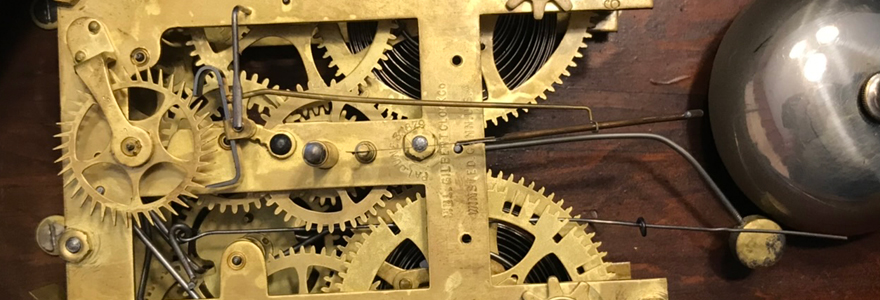
Antique mantel clocks have existed for a long time, and the name mantel came into use because mostly the clocks sit on fireplace mantelpieces. In most cases, you will see antique clocks with matching decorations, including flowers, lions or columns. These clocks were very popular in the 1800s, and they are still loved in the current years.
If you check the mantel clocks on lapendulerie.com, you will realise they share some similarities with bracket clocks, only that they don’t have a handle on the top. The clock’s movements are parts that enable movement of the hands and the pendulum swing. You can use different information to identify the clock movements.
Identifying the Movements
Mantel clocks use mechanical movements, but newer models use quartz movements and run on a battery. The movement includes any moving part of a clock, apart from the hands and pendulum. They help keep time and are made of several parts, including connected gears known as the train. The clock companies don’t make the movements; instead, they purchase them separately from the manufacturers and install them in the clocks.
So, the clock manufacturer and movement manufacturer are two different brands. Determining the movement manufacturer is very simple, take off the clock’s back to access the movement inside. Find the number of symbols indicated. Some clocks won’t have an easily visible number, and you might need to use a flashlight. Other numbers or symbols sit on the bottom of the clock, and others are written against the front just behind the clock’s face. Note that before removing the outer body of the clock, you might have to remove the weights and pendulum.
The Different Movement Manufacturers
As mentioned before, the numbers or symbols on the clock’s movement will help you identify the manufacturer. For instance, a very common manufacturer is Hermle. Movements from this manufacturer have six or seven numbers, a dash in the middle and the pendulum’s length in case the clock has any. Another manufacturer is Urgos, and their style is that they place “UW” before the numbers. Kieninger write the last two digits of the manufacturer’s year at the beginning of the sequence. Lastly, Seth Thomas places an “A” before the six numbers and a dash in the middle. Apart from these manufacturers, there are many more antique clock movement manufacturers. To avoid the trouble of manually finding the movement, you should get an antique clocks book with a list of different manufacturers and the codes used.
Confirm the Country of Origin
Another step in identifying an antique clock’s movement is confirming the country of origin. This will help eliminate other manufacturers, giving you a shorter list to work with. Look at the backside of the movement, and you will find a stamp of the country of origin. Most movement manufacturers are in Germany. Most vintage wall clocks are made in Germany, but others are from China and Korean brands.
Movement Worth and Repair
To find out how much your antique clock’s movement could cost, you can take it to a legitimate appraiser or check online auction sites. The sale price is mostly close to the actual buying price. There are also so many antique clock books with helpful information. Replacing clock movements is easy as long as you rely on the knowledge of such books and experts. Take the clock to a professional for advice and even for replacement services. Avoid replacing the movement by hand because you could damage it.
What Isn’t Needed to Identify a Clock Movement?
All mantel clocks come with manuals upon purchasing, but this does you no good. The manuals don’t have adequate information on the identification process. Neither do the stickers placed on the clock’s case. The reason is because the clock’s manufacturer isn’t the same as the movement manufacturer. For example, a grandfather clock has a different manufacturer for each component. Therefore, the manual won’t give you a clear direction on identifying the movement itself. You will have to go through the process explained above.
Conclusion
By following the steps explained in this guide, you will be able to find your antique clock’s movement. Just narrow down the list of manufacturers until you find what you are looking for.